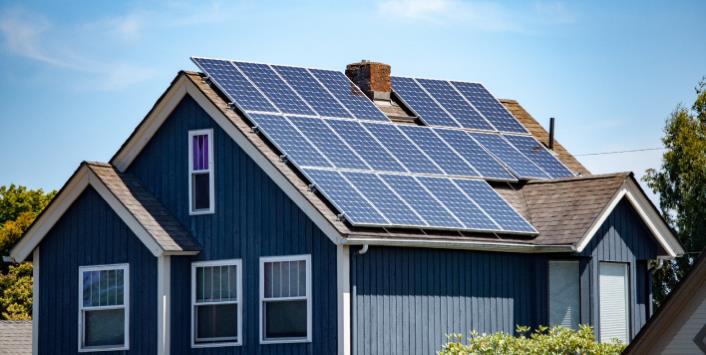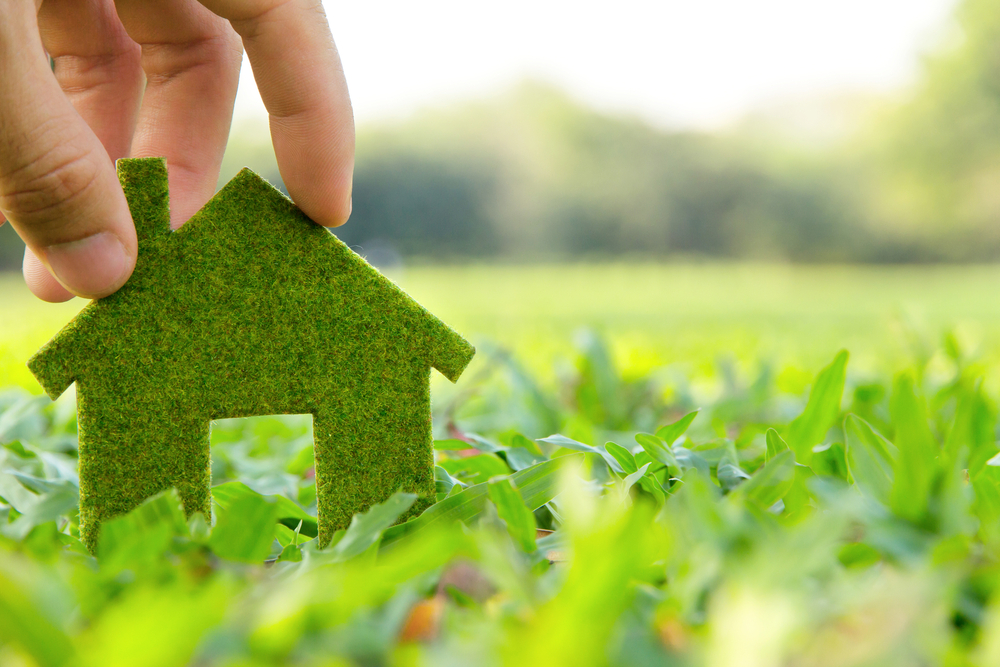
In today's environmentally conscious society, mastering waste management is of paramount importance. This article explores nine strategies that can help individuals and organizations effectively handle waste.
From composting and landfill diversion to green disposal methods and trash management, each strategy is designed to minimize environmental impact.
Additionally, the article delves into bulk waste removal, recycling centers, hazardous waste disposal, e-waste recycling, and waste minimization techniques.
By implementing these strategies, readers can contribute to a cleaner, healthier planet while enjoying the freedom of responsible waste management.
Composting
Composting is an essential waste management practice that involves the decomposition of organic materials to produce nutrient-rich compost. It is a technique that offers numerous benefits for both the environment and individuals.
One of the main advantages of composting is the diversion of organic waste from landfills, reducing methane emissions and the need for landfill space. Composting also helps to improve soil quality by providing essential nutrients, enhancing its water-holding capacity, and promoting the growth of beneficial microorganisms.
There are various composting techniques available, including aerobic composting, vermicomposting, and anaerobic digestion. Each technique has its own set of requirements and benefits.

Aerobic composting, for example, requires oxygen and involves the breakdown of organic materials by microorganisms, resulting in a faster decomposition process. Vermicomposting, on the other hand, utilizes earthworms to break down organic waste, producing nutrient-rich vermicompost. Anaerobic digestion involves the decomposition of organic waste in the absence of oxygen, producing biogas and nutrient-rich digestate.
Understanding the benefits and techniques of composting is crucial for individuals and communities seeking to adopt sustainable waste management practices.
Landfill Diversion
Landfill diversion is a critical waste management strategy that aims to redirect waste away from landfills and towards more sustainable disposal methods. It is an essential approach to reducing the environmental impact of waste disposal and promoting a circular economy.
Here are four alternative solutions for landfill diversion:
- Recycling: By separating recyclable materials such as paper, plastic, glass, and metal, these materials can be processed and transformed into new products, reducing the need for virgin resources.
- Composting: Organic waste, such as food scraps and yard trimmings, can be turned into nutrient-rich compost through the process of decomposition. This compost can then be used as fertilizer for plants and gardens.
- Waste-to-energy: Some waste materials can be used as a source of energy through technologies such as incineration or anaerobic digestion. This helps to reduce reliance on fossil fuels and generate renewable energy.
- Source reduction: By minimizing the generation of waste at its source, through practices like product design and packaging reduction, we can prevent waste from entering the landfill in the first place.
Implementing these alternative solutions for waste diversion can help to conserve resources, reduce greenhouse gas emissions, and promote a more sustainable and circular economy.
Green Disposal Methods
Green disposal methods are essential for sustainable waste management and eco-friendly practices. These methods aim to minimize the environmental impact of waste disposal by utilizing processes that prioritize recycling, reusing, and reducing waste.
Sustainable Waste Disposal
Sustainable waste disposal methods are essential for minimizing environmental impact and promoting a more eco-friendly approach to waste management. To achieve this, waste reduction and sustainable practices should be implemented. Here are four important strategies:

- Recycling: Recycling is a fundamental aspect of sustainable waste disposal. By separating recyclable materials from the general waste stream, valuable resources can be recovered and reused, reducing the need for raw materials extraction and energy consumption.
- Composting: Composting is an effective method for diverting organic waste from landfills. It involves the decomposition of organic matter into nutrient-rich soil, which can be used to enhance soil fertility in agriculture and gardening.
- Waste-to-Energy: Waste-to-energy technologies convert non-recyclable waste into electricity, heat, or fuel. This reduces the reliance on fossil fuels and minimizes the amount of waste that ends up in landfills.
- Extended Producer Responsibility (EPR): EPR is a policy approach that holds manufacturers responsible for the entire lifecycle of their products, including responsible disposal. This encourages the adoption of more sustainable and recyclable materials, reducing waste generation.
Eco-Friendly Waste Management
To ensure a more environmentally conscious approach to waste management, it is crucial to implement eco-friendly disposal methods that prioritize resource recovery and minimize environmental impact.
Eco-friendly waste management refers to sustainable waste disposal practices that aim to reduce waste generation, promote recycling and reuse, and minimize the use of landfills.
One key strategy is the adoption of advanced recycling technologies that can effectively separate different types of waste materials for recycling. This includes the use of sorting and processing facilities to separate recyclables from non-recyclables, as well as the implementation of effective collection systems to ensure proper disposal of waste.
Additionally, composting is another eco-friendly waste management method that involves the decomposition of organic waste materials into nutrient-rich compost, which can be used as a natural fertilizer.
Trash Management
Trash management plays a crucial role in effective waste disposal methods and reducing landfill waste. It involves the proper collection, transportation, and disposal of trash to ensure minimal environmental impact.
Effective Waste Disposal Methods
Proper waste disposal methods are essential for efficient management of a community's trash. Implementing effective waste disposal methods not only helps in maintaining cleanliness and hygiene but also contributes to environmental sustainability.
Here are four important techniques for effective waste disposal:

- Waste segregation: Separating different types of waste at the source is crucial for proper disposal. This allows for easier recycling and reduces the amount of waste sent to landfills.
- Waste to energy conversion: Converting waste into energy through processes like incineration or anaerobic digestion helps in reducing the volume of waste and generates useful energy.
- Landfill diversion: Diverting waste from landfills by promoting recycling, composting, and other eco-friendly alternatives is essential for reducing the environmental impact of waste disposal.
- Proper disposal of hazardous waste: Hazardous waste requires special handling and disposal methods to prevent contamination of the environment and public health risks.
Reducing Landfill Waste
One effective strategy for managing landfill waste is by implementing sustainable trash management practices. With the increasing concern for environmental sustainability, reducing landfill waste has become a crucial objective for waste management systems.
Waste reduction plays a vital role in achieving this goal. By minimizing the amount of waste generated, the pressure on landfills can be significantly reduced.
Additionally, landfill alternatives such as recycling and composting can divert a significant portion of waste from ending up in landfills. Recycling centers provide a means to recycle materials that would otherwise be disposed of in landfills, while composting facilities enable the decomposition of organic waste into nutrient-rich compost.
Bulk Waste Removal
A cost-effective solution for managing large quantities of waste is through the use of professional bulk waste removal services. These services offer a convenient and efficient way to handle waste collection and disposal, ensuring that waste is properly managed and disposed of in accordance with regulations.
Here are four key benefits of using bulk waste removal services:
- Time-saving: By outsourcing waste removal to professionals, businesses can save valuable time and resources that would otherwise be spent on managing waste internally.
- Cost-effective: Bulk waste removal services often offer competitive pricing, allowing businesses to reduce their waste management costs.
- Compliance: Professional waste removal services are well-versed in waste disposal regulations and ensure that waste is handled and disposed of in compliance with legal requirements.
- Environmental responsibility: These services prioritize environmentally-friendly waste disposal methods, such as recycling and landfill diversion, reducing the negative impact on the environment.
Recycling Centers
Recycling centers play a crucial role in waste management by providing a dedicated facility for the collection, sorting, and processing of recyclable materials. These facilities serve as central points where individuals and businesses can bring their recyclables, ensuring that valuable resources are not wasted and reducing the amount of waste that ends up in landfills.
The waste sorting process at recycling centers involves the separation of different types of recyclable materials, such as paper, plastic, glass, and metal. This is done through manual sorting and the use of specialized equipment, such as conveyor belts and sorting machines. Once sorted, the materials are processed to prepare them for recycling, which may involve cleaning, shredding, and melting.

Recycling centers play a vital role in promoting sustainability and minimizing environmental impact by diverting waste from landfills and enabling the recycling process.
Hazardous Waste Disposal
To ensure the safe and proper disposal of hazardous waste, stringent regulations and specialized facilities are required. Hazardous waste refers to any material that poses a threat to human health or the environment due to its toxic, flammable, corrosive, or reactive properties. Safe disposal of hazardous waste is crucial to prevent contamination of soil, water, and air.
Here are four key strategies for effective hazardous waste management:
- Classification and labeling: Proper identification and labeling of hazardous waste is essential for its safe handling, storage, and transportation.
- Storage and containment: Hazardous waste should be stored in secure containers or tanks that are designed to prevent leaks and spills.
- Treatment and disposal: Hazardous waste should undergo appropriate treatment methods, such as incineration, chemical treatment, or biological processes, before final disposal.
- Monitoring and compliance: Regular monitoring and compliance with regulations ensure that hazardous waste is managed safely and in accordance with legal requirements.
Implementing these strategies is crucial for the safe disposal and management of hazardous waste, minimizing the risk to human health and the environment.
E-Waste Recycling
E-Waste Recycling plays a significant role in the effective management of electronic waste. With the rapid advancement of technology, the disposal of electronic devices has become a pressing issue. Electronic recycling offers a responsible solution by diverting electronic waste from landfills and minimizing the environmental impact.
The process of e-waste recycling involves the collection, dismantling, and recycling of electronic devices. This ensures that valuable materials, such as precious metals and rare earth elements, are recovered and reused. Additionally, proper disposal of e-waste prevents the release of harmful substances like lead, mercury, and cadmium, which can pollute the soil and water sources.
To promote e-waste recycling, many countries have implemented legislation and established dedicated recycling centers. These facilities employ specialized techniques to safely handle and process electronic devices, ensuring that both data security and environmental protection are prioritized.

Waste Minimization
One effective approach in waste management is through the minimization of waste. Waste minimization strategies aim to reduce the amount of waste generated, thereby reducing the environmental impact and promoting sustainability.
Here are four key waste minimization strategies:
- Source Reduction: This strategy focuses on preventing waste at its source by using less material or finding alternatives that generate less waste.
- Recycling: Recycling is the process of converting waste materials into reusable materials. By recycling, valuable resources can be conserved and the amount of waste sent to landfills can be reduced.
- Composting: Composting is the decomposition of organic waste, such as food scraps and yard waste, into nutrient-rich soil. It diverts waste from landfills and reduces the need for chemical fertilizers.
- Lean Manufacturing: Lean manufacturing techniques aim to eliminate waste by identifying and eliminating non-value-added activities in the manufacturing process.
Frequently Asked Questions
What Are the Benefits of Composting and How Does It Help in Waste Management?
Composting offers several benefits for waste management, including reducing the amount of organic waste in landfills, producing nutrient-rich soil for agriculture, and mitigating greenhouse gas emissions. It is a sustainable and effective method for organic waste disposal.
What Are Some Common Green Disposal Methods That Individuals Can Adopt in Their Daily Lives?
To achieve eco-friendly waste management, individuals can adopt various green disposal methods. These methods focus on minimizing environmental impact through practices such as recycling, composting, and utilizing proper hazardous waste disposal techniques.
How Can Hazardous Waste Be Safely Disposed of to Minimize Environmental Impact?
To safely dispose of hazardous waste and minimize environmental impact, it is crucial to implement proper hazardous waste disposal methods. These methods ensure the containment, treatment, and disposal of hazardous materials in a manner that minimizes harm to both the environment and human health.
What Are Some Effective Strategies for Minimizing Waste Generation in Households and Businesses?
To minimize waste generation in households and businesses, effective strategies include waste reduction techniques and waste management practices. These strategies aim to minimize waste production, promote recycling, and implement sustainable disposal methods.
How Can Individuals Ensure That Their E-Waste Is Properly Recycled to Prevent Environmental Harm?
To ensure proper recycling of e-waste and prevent environmental harm, individuals should prioritize e-waste recycling awareness and responsible e-waste disposal. This involves educating oneself on proper recycling methods and utilizing designated e-waste recycling facilities.

 Family Craft ProjectsHome ImprovementCooking and BakingReuse and RecycleDIY GiftsEco-Friendly ProjectsDIY Home SolutionsSeasonal ActivitiesFun and GamesLearn TogetherPrivacy PolicyTerms And Conditions
Family Craft ProjectsHome ImprovementCooking and BakingReuse and RecycleDIY GiftsEco-Friendly ProjectsDIY Home SolutionsSeasonal ActivitiesFun and GamesLearn TogetherPrivacy PolicyTerms And Conditions

 Family Craft ProjectsHome ImprovementCooking and BakingReuse and RecycleDIY GiftsEco-Friendly ProjectsDIY Home SolutionsSeasonal ActivitiesFun and GamesLearn TogetherPrivacy PolicyTerms And Conditions
Family Craft ProjectsHome ImprovementCooking and BakingReuse and RecycleDIY GiftsEco-Friendly ProjectsDIY Home SolutionsSeasonal ActivitiesFun and GamesLearn TogetherPrivacy PolicyTerms And Conditions
